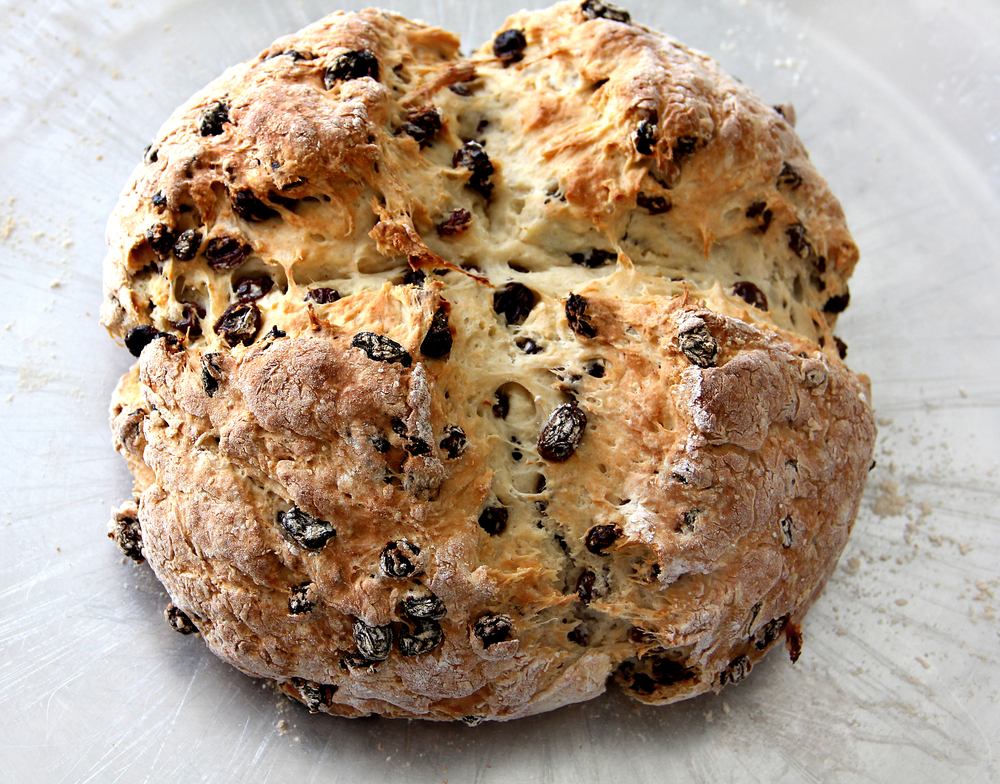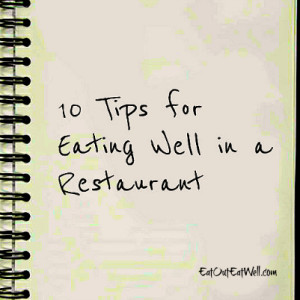
It’s not too hard to find green bagels, beer, and even green milkshakes on St. Patrick’s Day in the US. Of course there’s also corned beef and cabbage – and “Irish soda bread” — with a cruciform slashed on top. Have you ever wondered why the shape of the cross is slashed on the tope of the bread – and why it’s known as soda bread?
Soda Bread and Native Americans
The earliest reference to the chemical reaction that makes soda bread rise is actually credited to American Indians. Centuries before soda bread became popular in Ireland, they added pearl-ash (potash), the natural soda in wood ashes, along with an acidic ingredient, to make their breads rise.
Soda bread became popular in Ireland when bicarbonate of soda, also known as bread soda, became available to use as a leavening agent. Bread soda made it possible to work with the “soft” wheat grown in Ireland’s climate. “Hard” wheat flour, the main kind used in the US today, needs yeast to rise properly. “Soft” wheat flour doesn’t work well with yeast but is great for “quick breads” like soda bread.
According to The Society for the Preservation of Irish Soda Bread the earliest published recipe or soda bread was in a London magazine in 1836 – also later repeated in several US papers – that refers to a “receipt for making soda bread” found in a newspaper in Northern Ireland. The praise: “there is no bread to be had equal to it for invigorating the body, promoting digestion, strengthening the stomach, and improving the state of the bowels.” Sounds like tasting good wasn’t a big priority!
In 19th century Ireland, making bread was part of daily life and most families lived in farmhouses where kitchens had open hearths, not ovens. Bread soda meant that anyone who didn’t have an oven (most people in Ireland in the 1800’s didn’t) could make soda bread.
The bread soda wasn’t perishable, was relatively inexpensive and buttermilk, a by-product of making butter, and the soft wheat for flour, both necessary components of soda bread, were commonly available. The bread was cooked on a griddle or in a bastible, a big cast-iron pot with a lid that could be put right into coals or a turf fire.
Brown Or White; Cake Or Farl?
“Plain” soda bread often appears with a main meal — to soak up gravy – or at breakfast. It comes both brown and white, and in two main types, cake and farl.
Traditional brown Irish soda bread is basic table bread made from whole meal flour, baking soda (bread soda), salt, and buttermilk. White soda bread, made with white flour, is considered slightly more refined than brown soda bead and is sometimes considered a more special occasion bread.
Cake tends to be found more in the south of Ireland while people in Northern Ireland seem to prefer farl — although both can be found in the North and South, sometimes with different names.
Cake is soda bread that is kneaded, shaped into a flattish round, then deeply cut with a cross on the top. Now it’s normally baked in an oven.
For farl the dough is rolled into a rough circle and cut all the way through — like a cross — into four pieces or farls (“farl” is a generic term for a triangular piece of baking). It’s usually baked in a heavy frying pan, on a griddle, or on top of the range or stove. It’s flatter and moister than cake. Each farl is split in half “the wide way” before it’s eaten and is best when hot. It’s also allowed to cool and then grilled or fried as part of other dishes — especially the Ulster Fry, a local breakfast where golden and crispy soda bread and potato farls have been fried in reserved bacon fat and are served with Irish bacon, sausage, black pudding, tomato and egg.
What’s Spotted Dog?
There are regional variations of the basic soda bread recipe – even though some purists would say there should be no additions to the dough.
In Donegal caraway seeds were traditionally put in the bread. In earlier and leaner times when raisins or dried fruit were luxuries, a fistful of them or maybe even a little sugar or an egg — if either could be spared — would have been put into the white flour version of the bread during the harvest as a treat for the working men.
The non-traditional varieties of soda breads that are made with raisins, caraway, orange zest, and other add-ins are often called Spotted Dog.
What About The Cross On Top?
Before baking, a cross is traditionally cut on the top of the soda bread loaf with a knife – often said to ward off the devil and to protect the household.
Legend and symbolism aside, there’s a practical reason for the cruciform shape to be cut into the top of the dough. Slashing the dough lets heat penetrate into the thickest part of the bread and allows the bread to stretch and expand as it rises.
Slashing a round loaf with a cruciform shape ends up dividing the bread into quadrants that can be easily broken apart (the breaking of the bread). But, since Ireland is a Catholic country, the symbolism of the cross can also be interpreted as blessing (crossing) the bread and giving thanks.
One serving (74 g) of Irish Soda Bread with raisins and caraway seeds has 214 calories, 3.67g fat, 41.51g carbs, 4.86g protein.




